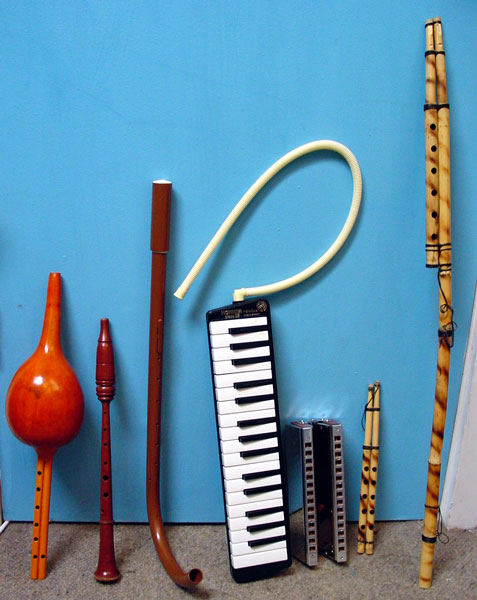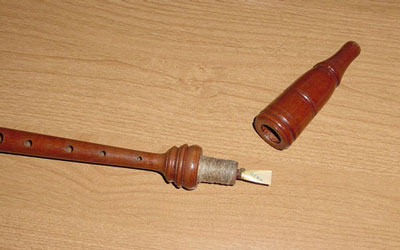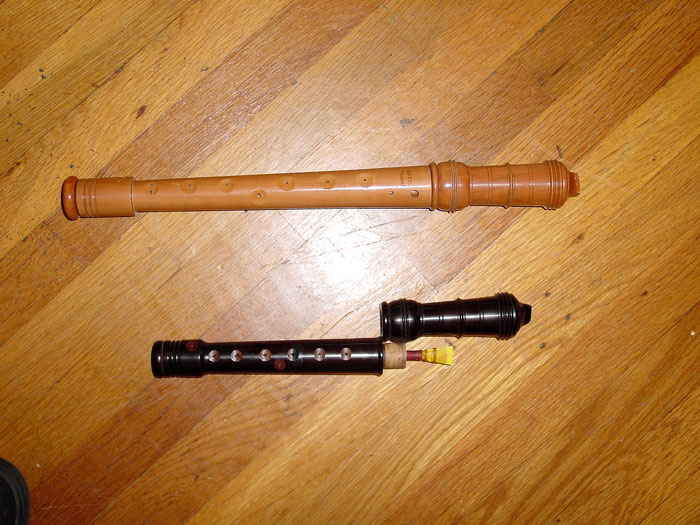|

Reedcap, free-reed, and idioglottal-reed winds- from L-R:
Pungi, Gaita chanter, Tenor Crumhorn, Melodica,
Contrabass Harmonica, Mijwiz, and Argul
Reedcap
instruments are woodwinds in which there is a protective cover, or
reedcap, placed between the player's lips and the tone-generating
(usually wood/cane) reed. The most common example of a reedcap instrument
is a bagpipe practice chanter.
The
North Indian "snakecharmer" or Pungi, is a double-clarinet
in which the reeds (one for the melody, one for the drone) are placed
inside a protective gourd, so the players lips never touches them.
The gaita is a Spanish bagpipe- here is the chanter (melody-pipe)
without the bag or drone-pipes.
The curved crumhorn was a reedcap instrument of the Renaissance, usually
played in matched sets of several different sizes. It sounds remarkably
like a Commodore 64!
Harmonica,
accordion, sheng/khaen (Asian mouth-organ), and melodica are all free-reed
instruments, in which air is passed over vibrating reeds (usually
made of metal) to generate tone, but no lip contact is made with the
reeds. A major difference from the reedcap instruments is that the
free-reeds usually have a full set of many reeds; a separate one for
each note. The melodica (keyboard) pictured at top is directly mouth-blown,
and can played with articulation and expression like any wind instrument.
The contrabass harmonica has double sets of reeds tuned in octaves-
the bottom reeds actually play lower than a bass saxophone!
At far right, the mijwiz and the larger argul are both Egyptian folk
double-clarinets with idioglottal reeds. Insted of having a separate
bamboo reed attatched to the mouthpiece, the reed is actually a vibrating
tongue of cane made from a slit cut into the wall of the instrument
itself.

The gaita chanter reed with the reedcap removed.

An alto kortholt
and a soprano kortholt with the reedcap removed. A kortholt is basically
a crumhorn that has been compressed into two parallel bores in a single
piece of wood, connected by a U-turn at the bottom of the instrument,
much like a bassoon.
mp3
demo snakecharmer 1.1MB
mp3 demo gaita chanter
0.8MB
mp3 demo tenor crumhorn
0.7MB
mp3
demo melodica 2.7MB
mp3 demo contrabass
harmonica 0.7MB
mp3
demo argul 0.6MB
BACK
All
material © Jay Easton 2001-2006 unless otherwise noted
|




